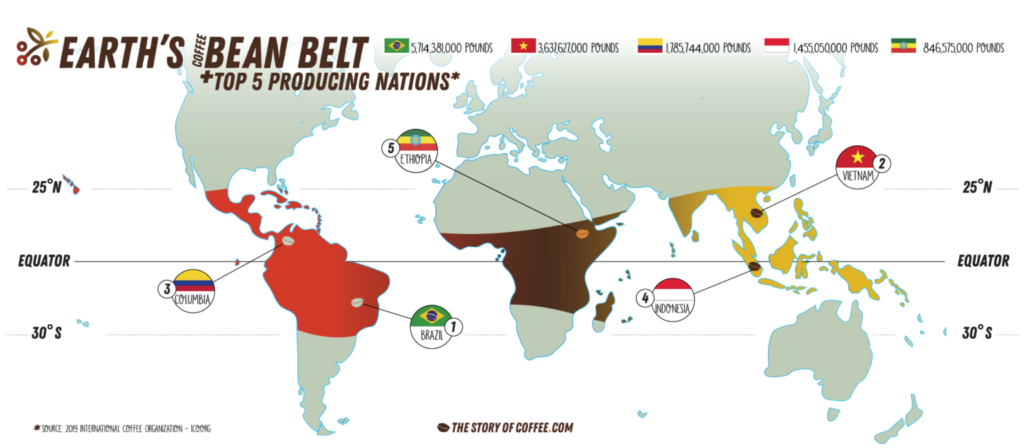
The origin of coffee is believed to be in the region known as Kaffa, now part of Ethiopia, in East Africa. According to legend, a goat herder named Kaldi noticed that his goats became more energetic and lively after eating the berries from a specific plant. Curious, he tried the berries himself and experienced a similar boost in energy.
The Middle East is believed to be one of the first regions where coffee was cultivated and consumed. The exact origin of coffee in the Middle East is uncertain, but it is believed to have been first grown in the highlands of Yemen, which is located on the southern tip of the Arabian Peninsula.
The use of coffee in the Middle East can be traced back to the 15th century, and it was initially used for medicinal purposes. By the 16th century, coffee had become a popular beverage in the region, and coffee houses began to appear in cities such as Istanbul and Damascus.
In addition to Yemen, coffee cultivation and production also spread to other parts of the Middle East, including Ethiopia, Egypt, and Arabia. Today, the Middle East remains an important producer of coffee, with countries such as Yemen, Ethiopia, and Saudi Arabia known for their high-quality coffee beans. The region also has a strong coffee culture, with coffee often being an important part of social and cultural traditions.
Coffee houses, also known as qahwah khaneh or ahwas, were popular gathering places in Cairo during the 15th century. At that time, coffee was a new and exotic beverage in the region, having been brought to Egypt from Ethiopia.
Coffee houses in Cairo were places where people could socialize, play games, and enjoy music and entertainment. They were often frequented by intellectuals, artists, and merchants and were important centers of cultural and political activity. However, the popularity of coffee houses also brought controversy and criticism from some religious leaders, who saw them as places of immorality and distraction from religious duties. In 1511, the Ottoman governor of Cairo, Khair Bey, banned coffee and coffee houses, sparking protests and unrest in the city. However, the ban was eventually lifted, and coffee houses were an important part of Cairo’s social and cultural life for centuries.
Coffee was introduced to Europe in the 16th century through trade with the Ottoman Empire. The first coffee house in Europe was opened in Venice, Italy in 1645, and coffee houses quickly became popular gathering places where people could socialize, read, and discuss politics and business.
Coffee also gained popularity among European royalty and aristocracy, and coffee houses were often associated with intellectual and cultural pursuits. Coffee houses became so influential in some cities that they were seen as a threat to political and social order and were sometimes banned or heavily regulated.
Coffee cultivation began in Europe’s colonies, with the Dutch establishing coffee plantations in their colonies in Indonesia, and the French and British establishing coffee plantations in their colonies in the Caribbean and South America. By the 19th century, coffee had become a major commodity traded around the world, and Europe remained a major consumer and producer of coffee. Today, European countries remain major coffee consumers, with Italy, France, and Spain known for their strong coffee cultures. Today, coffee is grown in many parts of the world, with major producers including Brazil, Colombia, Vietnam, and Indonesia.

